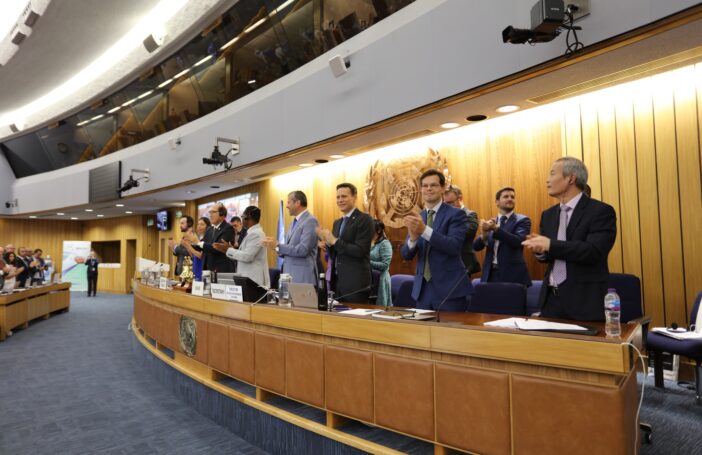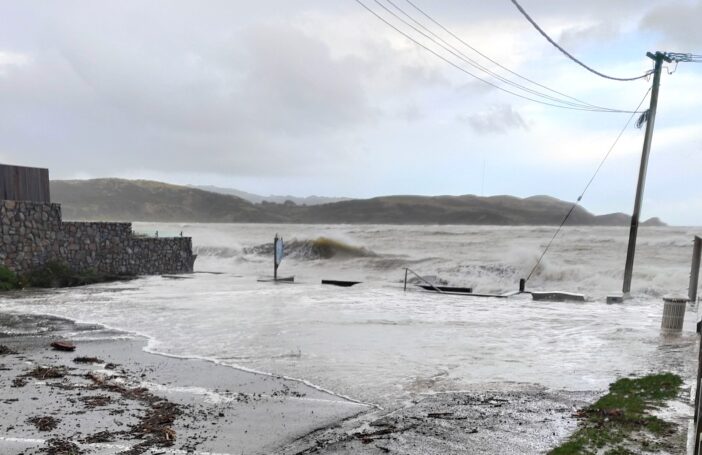A report released last month by the Department of the Environment and Energy shows that Australia’s greenhouse gas emissions in 2020 are estimated to be just 1.6% below their 2000 level. This means that, come June (when the 2020 fiscal year ends), we will have missed Australia’s decade-long, bipartisan and treaty commitment to reduce emissions by 5% by 2020 relative to 2000. Australia is not now scheduled to hit that target until a decade later. The 5% target was written by Australia into the amended Kyoto Protocol. Far from “meeting and beating” our international targets, as the Prime Minister insists, we have clearly fallen short.
The 2008 Garnaut Climate Change Review proposed three 2020 emissions reduction targets, with varying levels of ambition: 5%, 10% and 25%, all relative to 2000. The 5% target – put forward by the Review as the minimum Australia should do, regardless of what other countries commit to – was adopted by Kevin Rudd, and ever since has had bipartisan support. Even Tony Abbott said that the 5% target was his “one commitment and one commitment only” when it came to emissions reductions.
Fast forward to 2020, however, and it turns out we have missed that 5% target – and by quite a margin. Our actual emissions reduction by 2020 relative to 2000 is closer to zero than 5%. How can this be the case when we have the Prime Minister saying a year ago that “we will comfortably smash Kyoto 2”, and the Energy Minister Angus Taylor telling us just two weeks ago we will “beat our 2020 targets”?
Note how Taylor refers to 2020 targets rather than target. Australia in fact adopted more than one international commitment with respect to its emissions up to 2020 in the Doha Amendment to the Kyoto Protocol, which Australia signed up to in 2012, and ratified in 2016.
Of our 2020 international commitments, the 5%-by-2020-from-2000 one is by far the best known. But we also made another commitment, a multi-year target relating to emissions between 2013 and 2020. We undertook to keep average emissions for this period at 99.5% of their 1990 level. Fortunately, for the government, this little-known and much-easier-to-meet target has been met.
There is nothing wrong with having a multi-year target, but the one chosen had a lot of padding in it. Our 2013-20 emissions are only 87% of the 1990 level. Good, but that doesn’t mean we achieved a 5% reduction by 2020.
No doubt the government will say that the multi-year target was “legally binding” whereas the single-year 5%-by-2020 one was just a “pledge”. This argument is technically correct, but irrelevant. Both commitments are there, in black and white, in the amended Kyoto Protocol. If we didn’t want to be held to the 2020 5% target, we shouldn’t have signed up to and ratified a treaty in which we explicitly committed to it.
And the Kyoto Protocol is not the only place you will find the 2020 5% target. It is in the 2009 Copenhagen and Cancun Agreements (here and here) – the precursors to the 2015 Paris Agreement – all by itself, without any mention of any 2013–20 target.
It is telling that earlier annual government emissions assessments (conveniently collected here) report our progress (and prospective shortfalls) against both Kyoto targets: the multi-year and the single-year one. This shows that the government originally took both targets seriously, as it was obliged to. However, starting in 2016, the government stopped reporting on progress to the 5%-by-2020 target. From then on, it has focused purely on progress against the multi-year target.
1.6% versus 5%; multi-year versus single-year targets: do these differences matter, or are they just technicalities? It is true that emissions estimates bounce round a lot, and we shouldn’t be fixated on just one year’s performance. But the 2020 result is highly significant, and extremely disappointing, for five important reasons.
First, our international credibility will take a hit. Australia’s reputation is that when we make a commitment in an international treaty, we adhere to it. As Morrison himself has said: “The thing about Australia and our commitments on emissions reductions is we actually make them and achieve them.” In this case we haven’t.
Second, when the Garnaut Review proposed 5% as the minimum we should do back in 2008, emissions were growing rapidly. It was then thought that a 5% reduction, although it sounded modest, would in fact be quite hard to achieve. But Australia’s emissions actually peaked in 2007, for reasons, such as the GFC and the high dollar, largely unrelated to climate change policy. In addition, the costs of renewable technology unexpectedly plummeted over the next decade. Both these factors have made the 5% target so much easier to meet – even without the international trade in permits which the Review assumed would be necessary. We should be smashing the 5% target, not falling short of it.
Third, the trajectory that underlies our failure to meet the 5% target is alarming. Emissions were trending down from 2007 to 2015, but have been increasing since.
Fourth, this is not just about 2020, but 2030 as well. Greenhouse gas emissions would have to fall to about 510 million tonnes (Mt) to hit the 5% target. According to the same just-released official report, the government is projecting we will get there not by 2020 but by 2030, a decade late.
Australia now scheduled not to hit the 2020 5% target until 2030
Fifth and finally, this is about transparency. The government’s narrative on climate change rests on it “meeting and beating” our international commitments. As I have shown, this narrative relies on a fundamental fudge whereby targets are articulated using one framing, but assessed using another.
Overall, it is an indictment on the current government that it has been unable to achieve – and doesn’t plan to meet for another decade – a target that was the minimum put forward by the Garnaut Review; that has been embraced by both major parties for over a decade; and that we inscribed into international agreements.
But perhaps the even bigger problem is this Alice-in-Wonderland way in which targets and assessments of progress are now disconnected. Unless this is addressed, hopes of more ambitious national climate targets or policies appear futile.
Technical note: Because the 5% 2020 target is inscribed in the Kyoto Protocol, so-called “Kyoto accounting” is used to measure Australia’s emissions. The difference between this and conventional (UNFCCC) accounting is minimal. Using UNFCCC accounting, we haven’t reduced emissions at all between 2000 and 2020. The graph uses UNFCCC accounting because that is how the government presents the data out to 2030. Greenhouse gas emissions are measured in CO2-equivalent units.






The latest update I have for 2000 emissions is from “Table 8: National inventory total from 2000 to 2019, by financial year” in the September 2019 NGGI quarterly update published February 2020. This table reports 2000 emissions at 536.2 million tonnes. 95% of this is 509.4 million tonnes. But the “Figure 28: Australia’s cumulative emissions reduction task to 2020” of Australia’s emissions projections 2019 (published December 2019) reports the 2020 target at 513 million tonnes. Considering the September 2019 NGGI is the most recent publication, I will go with this one.
The 2020 financial year ends in June 2020. September 2019 was the first quarter of this financial year. Data Table 1A: Actual emissions (Mt), by sector, by quarter, since 2001-02 of the September NGGI reports the September 2019 quarter total emissions at 133.3 million tonnes. So 509-133=376 million tonnes for the remaining 3 quarters, or an average of 125 million tonnes each quarter. Considering the average of the last 3 quarters in the 2019 financial year was 132 million tonnes, and the Australia’s emissions projections 2019 was 534 million tonnes for the 2020 year, I think it is very improbable that we will meet and beat the 2020 target of 95% of 2000.
Thank you Professor Howes for this insightful, clear and helpful summary of the situation.
It is concerning that politicians are willing to make statements that bear no relation to the truth. This makes it difficult for the average citizen to understand what is really going on.
Thanks again,
Amanda.
Dr Amanda H A Watson
Thank you Stephen. But what about the emissions from the bushfires?